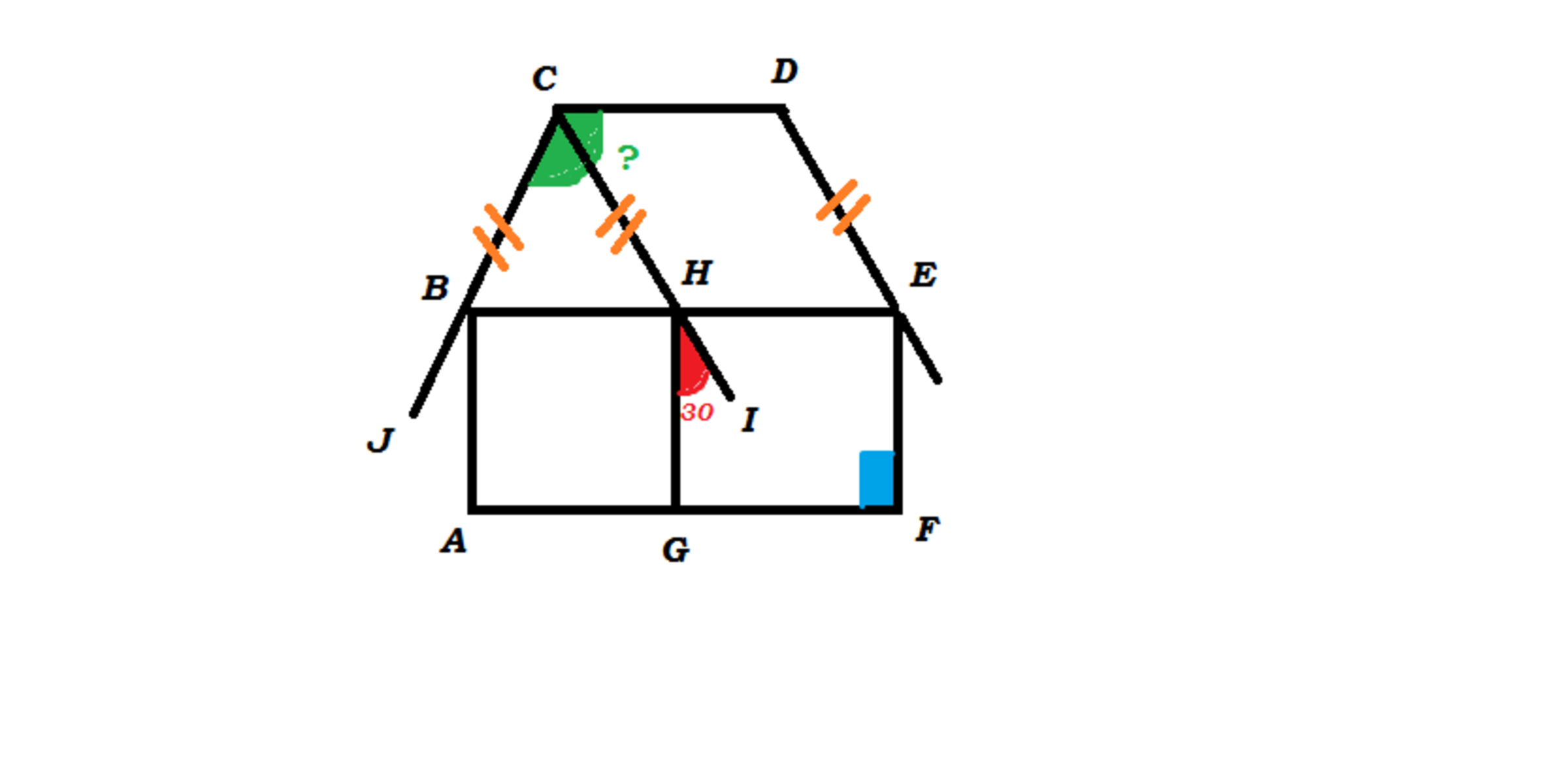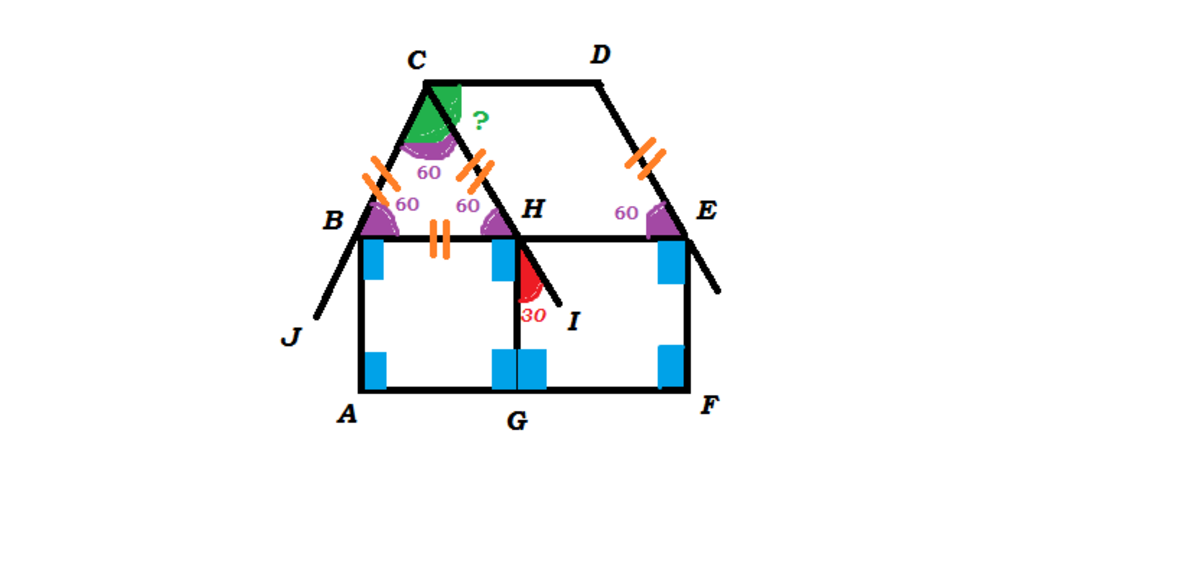A geometry problem by Akhitha Babu

Lines and are parallel to each other. Lines and are also parallel to each other. Also the lines and are equal in length. Lines and are perpendicular to each other. If , what is ?
This section requires Javascript.
You are seeing this because something didn't load right. We suggest you, (a) try
refreshing the page, (b) enabling javascript if it is disabled on your browser and,
finally, (c)
loading the
non-javascript version of this page
. We're sorry about the hassle.
Given AB|| GH|| EF .
And GF|| BH|| CD.
This implies AF|| BE|| CD.
Also given BC= CH= DE.
This implies <CBH= <CHB= <DEH.
Also given GF and EF are perpendicular to each other.
This implies AB, GH and EF are perpendicular to AF.
ie, <ABG= <BHG= <HGA= <GAB=<GHE= <HEF= <EFG= <FGH= 90 degree.
Therefore, <CBA= <CHG= <DEF
We know that
<GHI + <BHG + <CHB = 180 degree
30 + 90 + <CHB = 180.
<CHB= 180-30-90= 60 degree.
This implies <CBH= <CHB= <DEH = 60 degree.
ie, CBH is an equilateral traingle.
Thus <BCH= <HBC= <CHB= 60 degree.
Since BCDE is a quadrilateral,
<CBH+ <BCD = 180 degree.
90 + <JCD = 180.
Therefore <JCD= 180-90 =120 degree